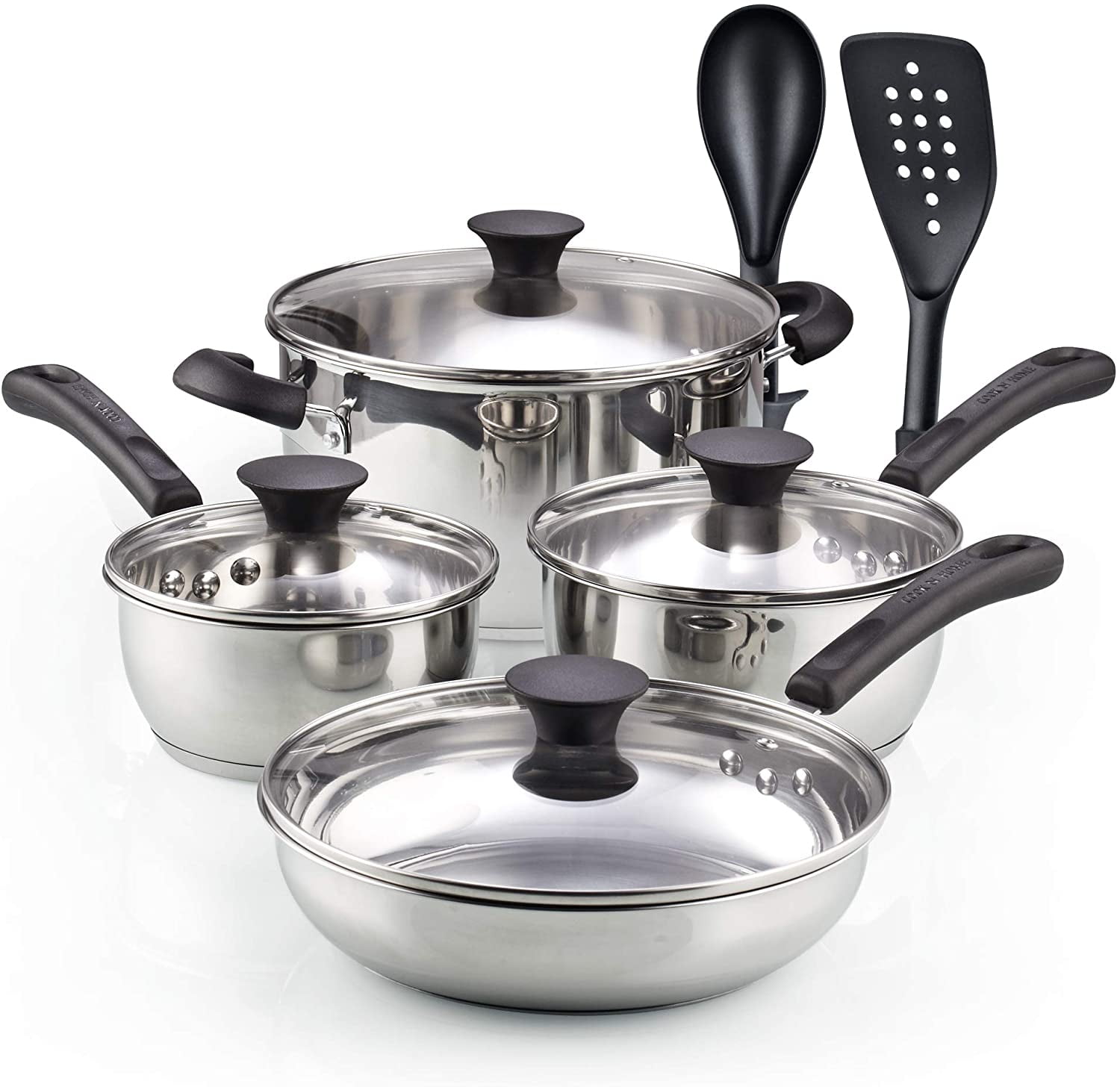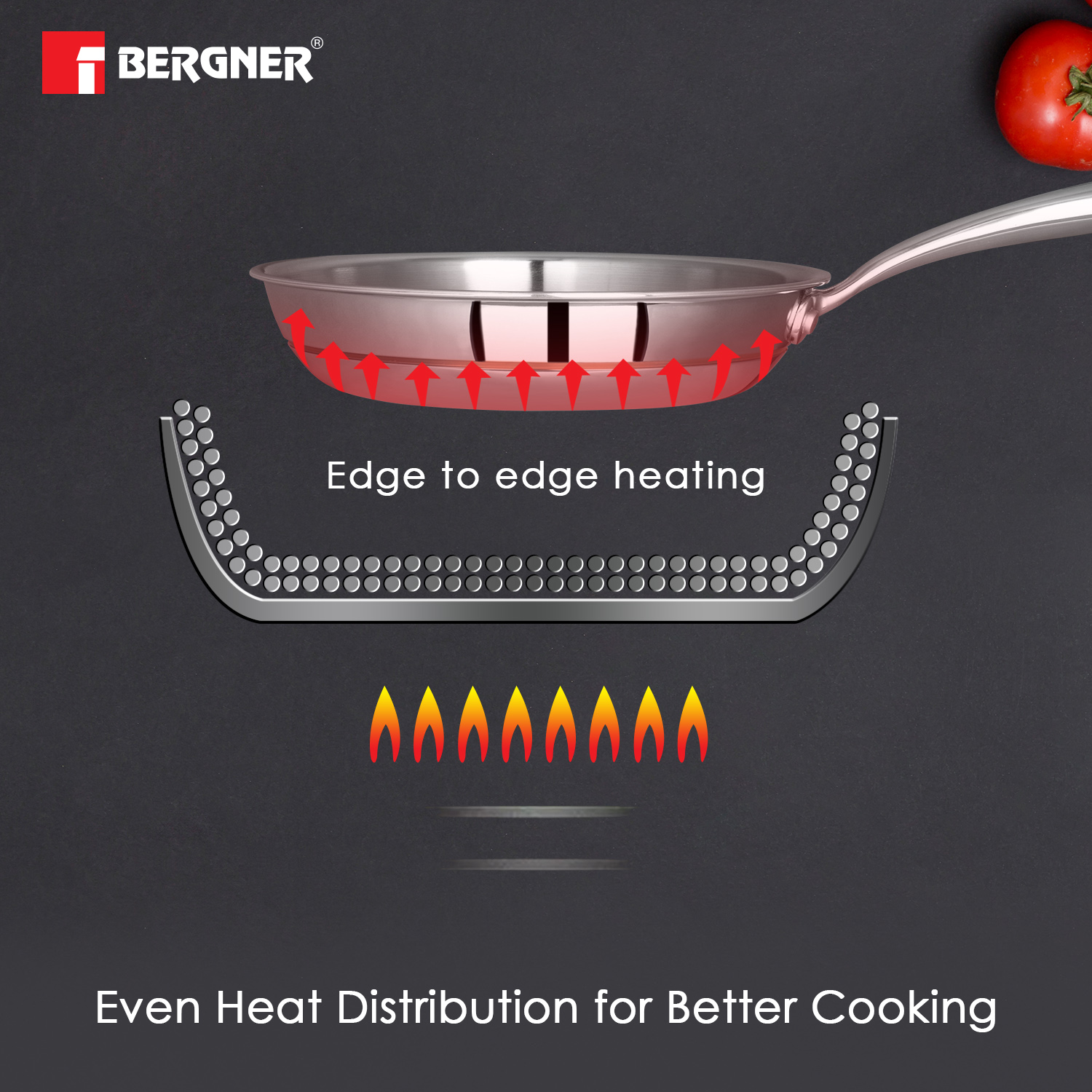

Copper boasts an even higher thermal conductivity than aluminum, heating up faster and giving you more control over your cooking. However, for something even better, stainless steel with a copper core is supreme. Most fully-clad stainless steel cookware stainless has an aluminum core, which provides excellent heat conductivity. Pro: Distributes Heat Fast and Evenlyĭue to the conductive aluminum or copper cores, stainless steel cookware heats quickly and evenly, resulting in faster cooking times and consistent, predictable results. But overall, stainless steel can handle high temps and is usually oven-safe up to 500° Fahrenheit. My one tip is that you avoid drastic temperature changes as this can cause warping. Most brands even offer a lifetime guarantee. Stainless steel won’t rust, flake, chip, scratch, or stain. Compare this to non-stick cookware, which only lasts about three to five years because the coating wears off. If you treat your stainless steel cookware well, it should last a lifetime. So, stainless steel trumps other kinds of cookware when it comes to versatility. With non-stick cookware, you can’t sear meat very well. Because of the high heat conductivity and even distribution, you can perform any cooking technique.Ībbio stainless steel pan ( view on )įor example, with carbon steel or cast iron, you can’t boil liquids, and acidic foods will break down the seasoning. It easily sears meat and fish, sautes vegetables, browns chicken, simmers sauces, and much more. Stainless steel is the ultimate all-purpose cookware.
Best stainless steel cookware full#
If you’re considering stainless steel cookware, here’s a full breakdown of all the advantages. Stainless steel cookware is a favorite amongst home cooks because it’s versatile, durable, responsive to temperature changes, and compatible with all cooktops. Now that you know the basics of stainless steel cookware, it’s time to dive into the pros and cons. The downside the heat doesn’t distribute evenly up the sides. All-Clad, a renowned cookware brand, invented fully-bonded stainless steel cookware in the 1970s, but most high-end brands use this technique today.įor a less expensive alternative, some brands bond an aluminum or copper plate to the bottom of each pan, which is called an impact-bonded base. Some brands offer fully-clad cookware, in which they layer aluminum or copper throughout each pan, not just at the base. Aluminum and copper have higher thermal conductivity, so they transfer heat quickly and distribute it evenly across the cooking surface. Simply put, steel is durable, but it’s a poor conductor of heat. So while the cooking surface and exterior is stainless steel, inside, the cookware’s core is usually aluminum or copper. The exterior is typically 18/0, which is also corrosion-resistant and necessary for making the cookware compatible with induction cooking surfaces.Įach brand makes its stainless steel cookware slightly differently, but in general, it’s made with bonded layers. The nickel adds strength and ductility to the steel and helps it resist rust and hold its polish.

18/10 simply means 18% chromium and 10% nickel. High-end brands typically use 18/10 stainless steel for the cooking surface. When shopping for stainless steel cookware, you’ll see certain number combinations that explain the steel’s characteristics. Stainless steel may also include carbon, manganese, nickel, and molybdenum. The chromium makes it corrosion resistant, so it won’t rust, stain, or discolor.

Stainless steel is an alloy of iron that contains chromium. Understanding the makeup of stainless steel cookware will help explain “the why” behind many of its pros and cons.

Stainless steel cookware is durable, versatile, compatible with all cooktops, and oven and broiler-safe.


 0 kommentar(er)
0 kommentar(er)
